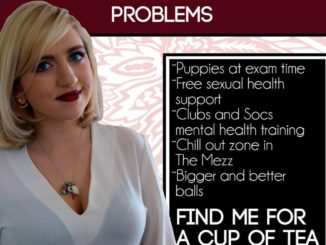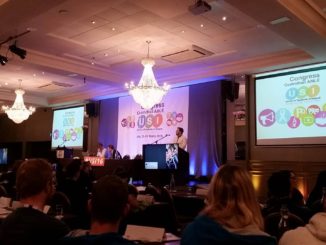
[dropcap]“I[/dropcap] could go from a size 10 to a size 16 pair of jeans in one day,” said Rachel, stressing the massive impact of this during her late teens.
Being a teenager, then tumbling through the troublesome twenties, can be hard enough with boyfriends, girlfriends, study, work and what feels like the world on your shoulders. But for Rachel, now 25, the past seven years of her life have consisted of constant pain, fatigue and countless doctor’s visits, but never a real answer to her problem.
“It took 8 years from the beginning of my symptoms to get a true diagnosis for endometriosis. This is ridiculous. Despite the fact I passed through a number of specialists and doctors, not one suggested to check for endo,” she said.
According to the Mayo Clinic, endometriosis is a painful disorder in which tissue that normally lines the inside of your uterus, the endometrium, grows outside your uterus instead.
The displaced endometrial tissue continues to act as it normally would. It thickens, breaks down and bleeds with each menstrual cycle. Because this displaced tissue has no way to exit your body, it becomes trapped causing the pain and discomfort.
Endometriosis is often mistaken for other conditions that can cause pelvic pain too, such as pelvic inflammatory disease (PID), ovarian cysts and is often confused with irritable bowel syndrome (IBS). In addition, IBS may accompany endometriosis, which can complicate the diagnosis.
Lena’s story
In a raw account in US Vogue recently, Lena Dunham bravely penned her journey battling endometriosis for over a decade, which ultimately forced her to undergo a total hysterectomy.
Now, this topic which needs so much more light to be shed on it, has become a talking point for others to discuss their struggle with it too.
The ‘Girls’ star took to Vogue to explain her decision to remove her uterus in a deeply personal, raw and unfiltered essay that brings you on her difficult journey, shining a light on her hardest battle.
“But I know something else, too, and I know it as intensely as I know I want a baby: that something is wrong with my uterus. I can feel it, deeply specific yet unverified, despite so many tests and so much medical dialogue,” she said.
“I just sense that the uterus I have been given is defective,” she said.
The 31-year-old, who has undergone nine procedures and countless ultrasounds, emphasised that the decision didn’t come easy, especially as she dreamed of having children since the day she understood how families were made. But the severity of her condition and her gut feeling that something was never right led her to come to terms with having to explore other options.
“Adoption is a thrilling truth I’ll pursue with all my might. But I wanted that stomach. I wanted to know what nine months of complete togetherness could feel like. I was meant for the job, but I didn’t pass the interview,” she concluded.
Her story, like Rachel’s, highlights the severity of pain and suffering endured when battling with endometriosis for so long.
“With pain like this, I will never be able to be anyone’s mother. Even if I could get pregnant, there’s nothing I can offer,” she wrote.
It reflects Rachel’s exhaustion from trying every recommended remedy but failing to relieve any of the symptoms.
“I was referred to a gastroenterologist specialist who searched my entire digestive tract and came back inconclusive – basically with a ‘you’re grand’ answer. So I accepted it and continued to feel rubbish,” Rachel said.
Diagnosis
Rachel recalled her journey to diagnosis as a long, drawn-out process, having been diagnosed with IBS along the way.
However, seven years from when she first started experiencing symptoms, Rachel knew something was wrong when she didn’t have a period for 8 months while living abroad.
“My periods were never perfectly spaced in a monthly cycle but I knew something was wrong,” she said.
On her return home, she attended a gynaecologist specialist who did an ultrasound and MRI which suggested endometriosis.
The next step was a laparoscopy procedure, where it was finally confirmed that she had endometriosis and she was treated with keyhole surgery.
Prior to this discovery, Rachel battled mentally and physically for years.
Some days none of her trousers would fit. Others she would have no energy left to do anything, something she said really impacted her social life.
However, post-surgery, Rachel really noticed a surge in energy. Speaking of the years she spent unaware of her condition Rachel said, “I was constantly exhausted and couldn’t understand how everyone my age through my college years had so much energy to go out and party and keep on top of everything”.
“But as the doctors kept telling me I was fine, I assumed this was how much energy everyone had and that I should just suck it up and go out and get involved with more activities,” she continued.
The delay in her diagnosis caused years of personal struggle. She said socially, people assume that you’re boring or ‘dry’ when you don’t go out like the normal teen, which in her case was due to constant fatigue.
“I really feel like awareness surrounding this condition needs to be raised and when a girl presents with these symptoms – instead of being misdiagnosed and told ‘you have IBS, get on with life’,” she said.
Katie Gallagher
Image credit: Hello



